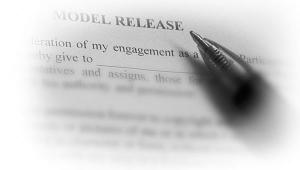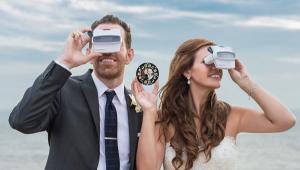power of attorney cost - A bespoke, solicitor drafted Lasting power of attorney or General power of attorney.
Copyrights & Privacy Rights: An Update On A Vital Issue
Shutterbug: Our readers work in a wide range of fields, including wedding/portrait, commercial, stock, and event photography. What are some of the basics that everyone, buyer and seller, should understand about copyright law and their work?

Carolyn E. Wright: Most clients do not understand what copyright means. They see a copyright notice during a movie or on a web page, but often think that it means that they can use the copyrighted work in any way as long as they don’t make money from it. So photographers have to help clients understand what they can and can’t do with photos.
You can use a car rental as a comparison to how your clients may use your photos. When you rent a car, you pay more for a larger/nicer car, you get to use the car only for the specific days of the rental period, and you often have a limited number of miles you can drive the car. But the rental car agency owns the car.
In the same sense, your clients pay more to get more products and/or increased licensing rights. But you own the rights to the photos and they have to get permission to use them in certain ways. Give them specific examples of what they can do, such as whether they may post the photos on family web pages or Facebook, make copies for friends and family members, and/or submit the photos to contests or magazines, etc.
SB: What are the most important points of copyright education?
Carolyn E. Wright: For your clients, it’s most important that they understand what you’re licensing to them. For you, it’s most important to know how best to protect your work. That includes registering your copyrights with the US Copyright Office, and using written contracts with your clients that correctly and clearly identify your client’s and your obligations, specifically including what rights you are granting to your client.
Be sure to get assistance from attorneys who practice in the area of law for photographers.
SB: How are copyright and licensing connected?
Carolyn E. Wright: In simple terms, copyright for photographers means owning property. With ownership, you get certain exclusive rights to that property. For photographic copyrights, the ownership rights include the right to: (1) reproduce the copyrighted work in copies; (2) prepare derivative works based upon the copyrighted work; (3) distribute copies of the copyrighted work to the public by sale or other transfer of ownership, or by rental, lease, or lending; (4) display the copyrighted work publicly. Licensing means that you grant to others some of the rights that you have to the property. For example, you may allow someone to reproduce your photo in the December issue of a magazine. You still own the property, but you allow someone else to use a piece of it.
SB: If photographers own the copyright when they create an image, why should they register the copyright? Can’t they just mail themselves a certified letter (“poor man’s copyright”)?
Mickey H. Osterreicher: The short answer is that if the copyright is not registered with the US Copyright Office the photographer has just limited the amount she/he can recover for any infringement and may also not be able to recover attorney’s fees.
Under 17 USC Section 504 titled “Remedies for infringement: Damages and profits,” an infringer of copyright is liable for either the copyright owner’s actual damages and any additional profits of the infringer; or statutory damages. The same section sets forth “Actual Damages and Profits.” It states that “the copyright owner is entitled to recover the actual damages suffered by him or her as a result of the infringement, and any profits of the infringer that are attributable to the infringement and are not taken into account in computing the actual damages.
“In establishing the infringer’s profits, the copyright owner is required to present proof only of the infringer’s gross revenue, and the infringer is required to prove his or her deductible expenses and the elements of profit attributable to factors other than the copyrighted work.”
SB: What kind of damages can be recovered when a copyright is properly registered?
Mickey H. Osterreicher: As set forth in that section under “Statutory Damages,” “the copyright owner may elect, at any time before final judgment is rendered, to recover, instead of actual damages and profits, an award of statutory damages for all infringements involved in the action, with respect to any one work, for which any one infringer is liable individually, or for which any two or more infringers are liable jointly and severally, in a sum of not less than $750 or more than $30,000 as the court considers just.
“For the purposes of this subsection, all the parts of a compilation or derivative work constitute one work.” It also goes on to state that “in a case where the copyright owner sustains the burden of proving, and the court finds that infringement was committed willfully, the court in its discretion may increase the award of statutory damages to a sum of not more than $150,000. In a case where the infringer sustains the burden of proving, and the court finds that such infringer was not aware and had no reason to believe that his or her acts constituted an infringement of copyright, the court in its discretion may reduce the award of statutory damages to a sum of not less than $200.” The court in its discretion may allow the recovery of full costs and attorney’s fees by or against any party other than the United States or an officer thereof.
SB: What are the most important things photographers should know about registration?
Mickey H. Osterreicher: First, that any legal action for copyright infringement must be brought in federal court. This is usually very costly as most copyright lawyers will require a substantial retainer. Second, without a registered copyright, the likelihood of recovery will be limited to actual damages and “any profits of the infringer that are attributable to the infringement and are not taken into account in computing the actual damages.” Third, without a registered copyright, recovery of attorney’s fees is limited. It should also be remembered that should a photographer lose a copyright case they may be liable to pay the attorney fees of the infringer, which could be substantial.
SB: If someone uses a photographer’s work without permission, what is the first thing the photographer should do?
Mickey H. Osterreicher: Photographers should register all their work in a timely manner pursuant to the guidelines issued by the US Copyright Office. When a photographer becomes aware of a copyright infringement she/he should immediately register that work if they have not already done so. If registered within three (3) months of publication of the infringement she/he may still be entitled to claim statutory damages and attorney’s fees. Next a photographer should contact the infringer in writing. This may be done directly or through an attorney.
The photographer or her/his attorney should identify the work; state how it is that the photographer owns the copyright to the work; that the work was used without the photographer’s permission; and that the infringer must cease using the image. These statements may usually be found in a cease and desist or takedown letter.
A photographer may also send an invoice for a reasonable amount they believe would compensate them for the infringement. If the infringer does not respond or comply the photographer should consult with a lawyer (if they have not already done so) to determine whether legal action is warranted and/or economically feasible.
SB: How are copyrights and privacy rights related, and what if a photographer wants to use an image in a portfolio of a model without a model release?
David MacTavish: In the strictest sense, copyright and privacy or publicity rights are not related, although they can appear to be in conflict when photographers use or seek to use certain photographs and subjects appearing in those photographs attempt to stop or request payment from use of the photographs. Copyright law is federal statutory (that is, enacted by the legislature) law and privacy law—and publicity rights law—traditionally developed in the common law (that is, based on court decisions) and has later been codified by some state legislatures.
Under law, no other person or entity may use a copyrighted work without the owner’s authorization. Although copyright rights are said to be exclusive, don’t be misled that these rights are supreme to the rights of others. A copyright owner can’t trample on another’s rights any more than a free speech advocate can yell “fire” in a crowded theater.
Right of privacy laws have largely been a common law phenomenon, although a number of state legislatures have codified their common law. The states that have recognized rights of privacy laws generally identify four types: (1) publicly placing a person in a false light (example: allowing a photograph of someone to be used falsely saying the subject has AIDS, or digitally manipulating a photograph and placing a subject in a Nazi uniform); (2) publicity given to private facts (example: photographing a surgical procedure and releasing the photographs to the public); (3) misappropriation of a person’s name or likeness (example: use of a celebrity’s likeness in an advertisement without authorization); and (4) intrusion upon the seclusion of another (example: cutting a hole in a wall and photographing someone in a restroom, or entering and photographing a suspect’s house with police during a raid).
SB: Are there some “general guidelines” photographers can be aware of to avoid violating privacy rights?
David MacTavish: Generally one should look to see if the use of the photograph(s) will be highly offensive to the subject person photographed (that is, the model), or if a “reasonable” person or jury will find the use or inclusion of the subject offensive to the subject.
About 20 states, generally those with large urban communities and large media industries, have recognized that some people create business and financial interests in their personalities, voices, likenesses, and so on. These states have passed publicity rights laws, outgrowths of common law privacy law, that generally are intended to protect the commercial interests of celebrities or people in the public spotlight.
The Illinois Right of Publicity Act is probably typical of most states’ publicity rights acts or common law misappropriation laws. The Illinois Act is interesting in that it protects not just celebrities but anyone whose “identity” is used commercially, and to make things easier the Illinois Act defines “commercial purpose” as “the public use or holding out of an individual’s identity (i) on or in connection with the offering for sale or sale of a product, merchandise, goods, or services; (ii) for purposes of advertising or promoting products, merchandise, goods, or services; or (iii) for the purpose of fundraising.”
In sum, as you can see, Illinois and likely most other states are concerned with protecting individuals from the unauthorized use of their identity or likeness with the sale, advertising, or promotion of goods or services, and from fundraising activities.
SB: So we have to look to state law but are there exceptions ever allowed?
David MacTavish: The Illinois Act has a number of exceptions: (1) portrayals or impersonations of subjects in a live performance, a single and original work of fine art, play, book, article, musical work, film, radio, television, or other audio, visual, or audiovisual work, provided that the performance, work, play, book, article, or film does not constitute in and of itself a commercial advertisement for a product, merchandise, goods, or services; (2) use of a subject’s identity for noncommercial purposes, including any news, public affairs, or sports broadcast or account, or any political campaign; (3) promotional materials, advertisements, or commercial announcements for a use described under exceptions (1) and (2) directly above; or (4) a person, firm, or corporation practicing the profession of photography (“professional photographer”) may exhibit photographs, videotapes, and images in or about the professional photographer’s place of business or portfolio, specimens of the professional photographer’s work; unless the exhibition is continued by the professional photographer after written notice objecting to the exhibition has been given by the individual portrayed.
SB: What about fine art and editorial photography?
David MacTavish: The Illinois Act, and likely most other publicity statutes, permits certain uses of a subject’s likeness for what can loosely be called fine art works, editorial or noncommercial works, as well as promotion of these works, and promotion of a professional photographer’s works unless and until the photographer is notified to cease and desist by a subject in a photograph.
This “takedown” rule simply means that once notified that the subject objects to the photograph’s use, the photographer becomes obligated to stop using the image or risk suffering the penalties of the Act. Photographers should check to see if their state has a similar statute and see what its rules are.
SB: Can photographers use images without model releases on their own websites for self-promotion?
David MacTavish: Unfortunately that isn’t addressed in the Illinois Act. However, because exhibiting a photographer’s work on their website can constitute advertising, as can showing a portfolio, a photographer can most likely advertise their photographs on their website and remain in compliance with privacy and publicity laws—at least with the Illinois Act, so long as the photographer acts in accordance with the takedown and other pertinent rules of their state.
Be aware that all sorts of persons, including clients, have a tendency to take images and copy and use the images without authorization. If one of your images should someday be illicitly copied and used, and if that image contains the unreleased or limited released likeness of a subject and the subject files a lawsuit, you as the photographer will likely be included in the lawsuit. Even if you have no liability in such a situation, it will be very costly just to extricate yourself from the lawsuit, and insurance can prove invaluable paying a law firm to help you.
SB: So how can you protect yourself with regard to the privacy and publicity laws?
David MacTavish: As a business, every photographer should always carry a commercial general liability insurance policy; this is one more good reason for maintaining this type of insurance policy with advertising coverage. This type of policy will likely only cost the average photographer a few hundred dollars per year, and can be well worth it.
If you have an unreleased image make sure the photo license with your client contains language admitting that no model release exists and that the client assumes all responsibility for all use of the image. Make sure this language appears in the terms and conditions section of all your photo licenses used in invoicing, photo delivery memos, and so on, or at least don’t contradict yourself, for example, by using the language in an invoice and different license language in a delivery memo.
Further protect yourself by always obtaining model releases from the subjects in your images, even if you believe the final image use will be noncommercial. Persuading a subject to sign a release is generally dependent upon how you act when showing them the document: don’t use undue pressure upon them to sign, stay relaxed but don’t act too cute or demean lawyers or the legal system when asking subjects to sign what clearly is a legal document—after all someone in their family might be a lawyer. Talk slowly and confidently, show them the release, and offer to give them a copy—this seems to reduce many subjects’ fears. Reducing the size from 8x11 to 5x7 or even 4x5 also seems to make the release less threatening.
Under law, to make a valid contract, each party is supposed to give up something of value. Because the model is relinquishing their signature and thus their authorization to use photos containing their likeness, the photographer should also yield something of value, so make it fun. Because it’s difficult to send photos days later, how about giving the model a brand-new dollar bill? If you are on assignment, charge it to your client. I knew one photographer who gave instant-win lottery tickets and on his model releases it stipulated that if the ticket was a winner the model and photographer would share the lottery proceeds. Whatever you do, make it fun and no one will refuse your request.
Remember, tampering with legal language may reduce or destroy your protection. One of my clients mistakenly misused just one word in an agreement and a lengthy court fight developed to determine what it was my client intended. It was a costly mistake for him.
Finally, always include room on the release, whether front or back, for the subject’s printed name, telephone number, e-mail address, and photo number(s). That way you can track them down in the event the photo is licensed, and the photo numbers should be those in which the subject appears.
Partial List Of Resources
References:
• The full US Copyright Act can be found in Title 17 of the United States Code (USC). For more information regarding copyright law, see: www.copyright.gov/title17/.
• Carolyn E. Wright’s book Photographer’s Legal Guide and her blog: www.photoattorney.com
• Tad Crawford’s book Business and Legal Forms for Photographers: www.allworth.com
• Bert Krages’s book Legal Handbook for Photographers: The Rights and Liabilities of Making Images: www.krages.com/bpkprof.htm
• Business Practices: www.nppa.org/professional_development/business_practices/contracts.html
• Cease and Desist: http://nppa.org/member_services/advocacy/cease_and_desist_sample.pdf Sample model releases:
• http://asmp.org/tutorials/simplified-model-release.html
• “Easy Release” and “Photographers Contract Maker” apps for iPhone, iPad, and Android
- Log in or register to post comments


This is now a huge legal issue, most of the public let alone businesses do not understand it and think it's a free for all. There is huge potential value in IP, so if you create anything valuable, especially if you put it on the web, almost certain that someone will try and copy it or use it for free, either due to ignorance or deliberately. For help go to Gannons Solicitors

This is a highly complex area but then best protection is practical - watermark and copyright your work and monitor - if you sell profesionally get a contract drawn up - we would be happy to help - http://www.darlingtons.com for more info.
















































